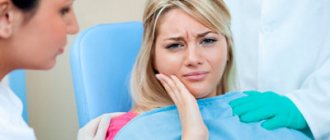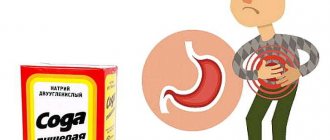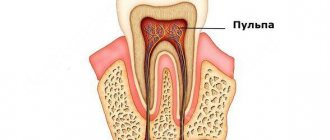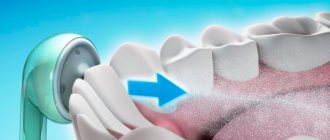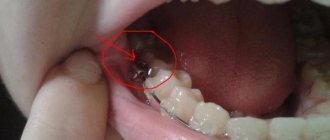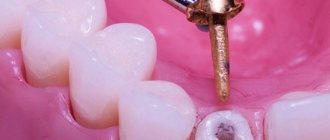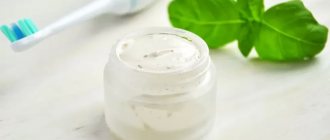To keep your teeth healthy and beautiful, you must follow the rules of hygiene. You should be extremely careful when choosing toothpaste.
Unfortunately, you cannot be sure that the entire list of beneficial additives indicated in the composition is actually present in the paste. But you can make healthy pasta yourself from available products. Let's take a closer look at how to make healthy toothpaste at home.
The main advantages of natural pastes
Each purchased paste is made using chemical components. Such substances can damage tooth enamel and cause irritation of the mucous membrane.
During hygiene procedures, a small amount of paste enters the esophagus. With regular exposure, the chemical components of the product can cause disturbances in the functioning of the digestive system.
The following components pose a health hazard:
- lauryl sulfate;
- parabens;
- triclosan.
Fluoride is an essential element in toothpastes with a whitening effect. Despite its widespread use, this component is also not entirely beneficial for the human body. Homemade pastes will protect you from the negative effects of such chemical components. In addition, home remedies do not cause irritation and their effects are milder.
It's worth noting that most store-bought toothpastes are not recommended for everyday use, especially those that have whitening properties. This warning does not apply to hygiene products made independently from natural ingredients.
The natural hygiene product is absolutely safe if you follow the recommendations on how to properly make toothpaste with your own hands, you can also use the instructions with photos.
The homemade paste contains essential oil, which effectively strengthens tooth enamel and also promotes gum healing. Such oils are powerful antiseptics that are gentle on tissues.
Why you should avoid industrial compounds
Most often, industrial oral care products contain many ingredients that are hazardous to human health. Among them:
- Glycerol. It envelops each tooth, thereby preventing the enamel from repairing itself.
- Sodium lauryl sulfate. This chemical compound, which causes the formation of foam, provokes irritant skin reactions and adversely affects all organs.
- Triclosan. There is information about its connection with disorders of the nervous system, as well as with the development of cancer.
- Fluorine. This component tends to accumulate in the human body and is toxic in large quantities. Therefore, you should not take responsibility when choosing a fluoride-containing cleaning product when purchasing; if necessary, it should be prescribed exclusively by your dentist. In addition, many food products already contain sufficient amounts of this substance.
Then you ask, what to replace toothpaste with? Nothing. Just try to make a natural one yourself. And just a month after using it, your smile will acquire a unique whiteness and shine.
Selecting the ingredients correctly
In folk medicine, there are many options for preparing homemade mixtures for cleaning teeth. To choose the right prescription for you, assess the condition of your oral cavity and identify problems that need to be eliminated. After that, choose what you need to make toothpaste.
Pastes containing cloves have an analgesic effect. This plant not only treats toothache, but also prevents its recurrence. Therefore, it is appropriate to use cloves also as a prophylactic agent. To normalize blood circulation in the gums, it is recommended to add rosemary extract.
Note!
Toothpicks - benefits, harm and tips for choosing safe toothpicks from the best materials- Tartar cleaning - effective technologies and methods of professional cleaning. Indications and contraindications for tartar removal
- Sour taste in the mouth - causes and symptoms of what disease can a sour taste in the mouth be?
Thyme can help eliminate harmful bacteria. Fresh mint leaves stop inflammatory processes and give freshness to your breath. Tea tree has many beneficial properties. It is effective in the treatment of caries, and also combats increased sensitivity of the gums.
Medicalization: pro et contra
An increasing number of human behaviors, characteristics or problems are viewed as medical rather than social, political, personal or religious issues. This can cause both positive and negative ]]>consequences]]>. The effects associated with over-medicalization are:
Because both the potential harms and benefits are significant, distinguishing between justifiable and harmful overmedicalization is critical. However, it's not that simple. There is an old and ongoing debate in sociology and philosophy of medicine about the correct definitions of disease and health. An alternative, pragmatic approach to this problem is that, rather than debating whether a condition is a true disease, ]]>should]]> carefully evaluate whether and why a particular condition should be included in the medical field of interest.
This approach is based on assessing and comparing the following points: the harm caused by the medicalized condition; adequacy, effectiveness and safety of medical decisions; the limits of social expectations regarding the normalization of individual behavior. That is, a comparison is made of the medicalization of a certain phenomenon with alternative ways of understanding it.
Meanwhile, it is the pharmaceutical industry that is actively involved in creating public and medical discourse about health. It is in the interests of the pharmaceutical industry that problems are perceived as medical and necessarily requiring the use of drugs. The industry influences the perception of certain problems and promotes its tools to solve them. Pharmaceutical marketing and drug advertising are sometimes even accused of “disease making” and making healthy people think they are sick. How justified are such accusations?
In the bioethical literature, this type of accusation is usually referred to as “disease trafficking” or “disease branding.” “Disease trading” can be ]]>described]]> as “expanding the diagnostic boundaries of a disease for reasons of economic gain.” Such “expansion” rarely involves literally creating or inventing new, unreal diseases. However, the pharmaceutical industry is willing to work hard to increase drug consumption, and some manipulations include changing our understanding of diseases in order to promote appropriate drugs.
The strategies of the “disease merchants” are conventionally divided into the following:
- medicalization of common conditions, as in the case of baldness;
- positioning mild symptoms as serious, such as irritable bowel syndrome;
- viewing personal or social problems as medical, as is the case with social phobia (only 12% of young people who described themselves as shy meet]]> criteria for social phobia);
- drawing up an idea of the risks as an independent disease, for example, osteoporosis ]]>suggest]]> treat before symptoms appear, using ]]>online calculator]]>;
- overestimating prevalence to maximize potential markets, as in the case of erectile dysfunction.
The above strategies seem reasonable, although the examples used will seem controversial to many. "Disease trafficking" is a real problem, but don't jump to conclusions like "there's no cure for osteoporosis" or "irritable bowel syndrome doesn't exist." This syndrome is known, but the benefits of most proposed treatment options ]]>weakly]]> have been proven.
Male pattern baldness ]]>is]]> physically benign, although it is increasingly being called a “disease” based on claims that it causes profound suffering. The over-medicalization of baldness, according to a meta-analysis of 37 studies, is supported by the fact that most studies were likely to have a commercial impact (78%), present baldness as a disease (77%), were conducted on biased samples (68%), and promoted products or services for growth hair (60%), overlooking restrictions (68%).
Psychologists ]]>believe]]> that it is necessary to fight the medicalization of baldness and allow men to make an informed choice whether to do something about their baldness or not. Thus, baldness is more of a cosmetic and aesthetic issue than a painful condition.
In the case of erectile dysfunction, which undoubtedly causes discomfort for men, normal medicalization has long gone to the highest, but not the best, degree, ]]>turning]]> into phallocentrism and ignoring the natural age-related decrease in libido or psycho-emotional causes that do not require medicinal intervention. This medicalization is promoted by urologists, the medical industry, the media and entrepreneurs. Despite the clear advantages it provides men, it has serious disadvantages - in terms of disappointment in the promised ideal erection and postulation of a false universalized and biologized vision of sexual experience.
At the same time, other sexual interests of women that differ from the phallocentric sexual scenario are denied. In addition, the artificially increased demand for drugs to improve erection ]]>stimulates]]> the supply of counterfeit drugs - 25% of such drugs in developing countries and up to 50% in some African and Asian regions, which often do not meet safety requirements, contain harmful chemical impurities and pathogenic bacteria. Some sources estimate the market for counterfeit erectile dysfunction drugs to be worth between $75 billion and $200 billion.
The medicalization of the female body and its natural processes is a separate and even more striking phenomenon. Today, premenstrual syndrome, menstruation, pregnancy, childbirth and menopause are practically equated to painful conditions. Also ]]>medicalized]]> sexuality, appearance and mood. Based on this, then being a woman is already a disease. Women are prescribed almost 70% of all medications and visit doctors four times more often than men. This makes women a key market for pharmaceutical companies throughout their lives.
Currently, a condition that is considered a disease or disorder is determined by various medical authorities through a complex assessment process. Development and revision of the International Statistical Classification of Diseases and Related Health Problems (ICD), or the Diagnostic and Statistical Manual of Mental Disorders (DSM) is a multi-year task involving scientific experts from all over the world. And mere conflict of interest or market pressure exerted on the assessment process is not enough to categorically deny these documents.
Promotion of diseases, for example by creating a marketing narrative about a condition and its prevalence, often occurs after the disease has been included in an official classification. Restless legs syndrome was for some time ]]>called]]> a fictitious or made-up disease, but began to be promoted many years after its introduction in ICD-9 to increase demand for drugs. However, to evaluate any instance of medicalization, one needs objective and reliable data on the specific disease, which is not always easy to obtain.
The pharmaceutical industry has many tools that, if used incorrectly, can distort the understanding of diseases and their treatments. These include sales representatives, drug marketing to physicians, direct advertising, Internet content, disease awareness campaigns, sponsored medical associations and patient communities, lobbying, astroturfing (feigning public support), targeted medical education, sponsored research, medical conferences and payment of medical experts - authoritative leaders of public opinion.
For the sake of profit, all of these tools are used to exaggerate the effectiveness and safety of drugs, encourage their unauthorized use (prescribing for off-label indications), lower thresholds for diagnosing diseases, or disseminate unverified data on the incidence of disease. As American researchers rightly noted, “one hand—the scientific divisions of the industry—works hard to discover new effective and safe drugs. Then the other hand—the marketing departments—turns good drugs into bad ones by expanding their actual use beyond the proper evidence base.”
Paste for sensitive teeth
A paste recipe based on white clay and honey is recommended for those with sensitive teeth and gums. This product will carefully remove plaque and tartar and give freshness to your breath. In addition, the paste effectively whitens tooth enamel. Let's look at the instructions on how to make toothpaste.
To prepare the product, take white cosmetic clay (80 g), honey (15 g), two drops each of chamomile and sage essential oil.
Initially, make a mixture of viscous consistency from clay and water, into which add honey and oils alternately. Mix the ingredients until smooth.
The world is on alert
At the end of the second year of the pandemic, experts are increasingly talking about new threats. Despite all the troubles that the new coronavirus has brought to the world, it, unfortunately, is not the first and certainly not the last. Rapid climate change caused by anthropogenic activities has put humanity on alert.
The record amount of carbon dioxide that has accumulated in the earth's atmosphere will contribute to a global increase in temperatures. Together with heat and drought in some regions and floods and landslides in others, we will face not only mass climate migrations, but also new, previously unknown diseases.
By increasingly invading the habitat of wild animals, we risk opening Pandora's box. Of course, the threat from viruses discovered as a result of thawing permafrost has not been canceled, but zoonoses - zoonotic infections that are transmitted from animals to humans - pose the greatest danger today. Ultimately, this is how COVID-19 emerged—through natural evolutionary processes.
Viruses use some animals as "intermediate" hosts
In fact, all of the above is not news, especially for specialists in the field of global health. So, back in 1947, the World Health Organization (WHO) began tracking viruses with pandemic potential. The researchers used standardized symptom checklists to identify threats by using standardized symptom checklists to look for signals of emerging or re-emerging disease among groups of patients with symptoms that are not easily diagnosed.
There's just one problem: if the patient is admitted to the hospital, the outbreak has already occurred. This is what happened with the coronavirus SARS-CoV-2, which causes COVID-19: the infection was likely already widespread, long before it was first detected. It turns out that the developed strategy failed us.
Photo instructions on how to make toothpaste
Help the project, share your review
Join the discussion of the article:
Site search
Recommendations
Unusual crafts for children - ideas, tips, photo examples
Sangviritrin - instructions for use of the solution and indications for use for dental problems
Mouth spray: the best formulations with prebiotics, their cost and application features
Falimint - reviews, instructions for use and expert assessment of effectiveness
Stomatofit - complete instructions for use, dosage, selection of analogues and price comparison
Ketorol for toothache - reviews of use and effectiveness. Cost and dentists’ opinions about the medicine
Antibiotics for flux: the most effective remedies and tips on choosing medications for children and adults
Metrogil denta - analogues, advantages of use, composition features and indications for use
Bathroom vanity unit – choose the best option. Photo of design, combination, sizes, color
Periodontocide - means for prevention, release form, methods of application and indications for use
Medicine for teeth - rating of the best remedies for eliminating pain and relieving swelling. Doctors' advice and cost of the most effective drugs
Medicine for gums - the most effective gels, ointments and tablets for relieving pain and discomfort
Curtains made of beads - what is their feature? Photo of beautiful design + installation instructions
Blue for stomatitis - methods and features of using the medicine for children and adults
Cholisal is a dental gel for gums and oral cavity. Price and instructions for use
Kamistad gel - instructions for use, features of use, composition, indications and contraindications
Lincomycin - instructions for use, cost, reviews from patients and doctors
Ointment for gums - the choice of the most effective healing and anti-inflammatory agents
Ibuprofen - clinical practice, instructions for use and safety tips
Pain after wisdom tooth removal - possible complications and duration of pain after removal
Sections
Most read on the site:
A tooth hurts at night The sky in the mouth hurts Vitamins for teeth Inflammation of the gums Inflammation of the tooth Gel for gums Herpes in the mouth Dental hygiene Gorpils Dekasan Dental floss Tartar Plaque Ibuprofen Irrigator How to choose a mouthwash How to brush your teeth Kamistad gel Bleeding gums Medicine for gums Medicine for teeth Cavity treatment mouth Lincomcin ointment for gum metrogil denta nystatin swollen upper lip whitening paste gums gums periodontocide Prevention Pomic in the mouth Solution to the oral cavity of Sinki sinky from stomatitis spray spray stomatophytite dentistry in the gums, ultrasound halitosis Hepilor Holisal Crunches the jaw Itchy teeth Cleaning gums Splinting teeth Mouth ulcers
Copyright © 2022 ZubkiExpert.Ru is a leading online portal about dentistry. Modern methods of diagnostics and dental treatment! Home | Sitemap | Dentist consultation
Medicalization of grief
The historian and philosopher ]]>Ivan Illich]]>, one of the first social critics of modern medicine, in the book “]]>Nemesis of Medicine]]>” unequivocally condemned the general idea of the medicalization of pain. According to him, by viewing pain only as a medical problem, we are trying in vain to avoid the fact that suffering is an inevitable part of human existence. In the past, communities had different cultural, religious, and philosophical ideas about the role of pain in life. Nowadays, thanks to the medicalization of pain, any suffering has become useless and meaningless, and the only weapon against it is painkillers.
Illich's arguments are quite controversial, and according to the pragmatic approach to medicalization, in the case of physical pain it is quite justified because:
1) pain causes harm;
2) recognizing physical pain as a problem is not an example of unjustifiably restricting the diversity of individuals for the sake of normalization;
3) medicine provides the most adequate methods for understanding physical pain and its causes;
4) medicalization of pain provides the most effective and safe methods of alleviating suffering.
Therefore, in general, the medicalization of physical pain can serve as an example of good medicalization. However, this does not mean that every medical or pharmaceutical response to every type of mental suffering will be equally justified.
On the other hand, the medicalization of grief, especially when only a short duration of grief is seen as normal, is sometimes considered an example of over-medicalization. According to DSM-IV, bereaved people were only eligible for a diagnosis of major depressive disorder if symptoms were “excessively severe or prolonged,” with duration defined as “more than two months after the death of a loved one.” person>". In the DSM-IV, what is called prolonged grief disorder or persistent complex bereavement disorder was recognized as a separate mental condition.
However, limiting long-term depression after the death of a loved one to lasting more than two months is controversial. Today, long-term grief disorder is not recognized as a distinct mental health condition with clear diagnostic criteria. The eleventh revision of the International Classification of Diseases (ICD-11), which comes into force in January 2022, sets a threshold of six months for confirming a diagnosis of depression, which clearly exceeds the expected cultural, social or religious norms found in specific culture and context, and in ]]>DSM-V]]> - two months.
The medicalization of normal grief ]]>stigmatizes]]> and diminishes the normality and dignity of pain, distorts the intended existential processing of loss, and exposes many people to unnecessary and potentially harmful drug treatment.
Diagnosing depression in situations where a person is experiencing grief can easily become a push and serve to promote appropriate medications. People who treat depression with antidepressants are more likely to have ]]>depressive episodes in the future than those who take no medication at all, a meta-analysis of nearly 40 years of published studies has found.
Patients with major depressive disorder who do not take medication have a 25% risk of relapse, while those who use antidepressants and then stop taking them have a 42% risk of relapse. This creates a vicious circle of cycles of prescription and withdrawal of drugs. The question arises: does it make sense to prescribe drugs to those who do not need them and involve them in this cycle?
Proponents of the medicalization of grief ]]>agree]]> that there have been no ideal studies defining the full spectrum of normal depression and clear boundaries of this condition. Experts say the harm that could occur if ordinary grief is overdiagnosed as MDD pales in comparison to the harm of missing a diagnosis of major depression. Given that completed suicide occurs on average in about 4% of patients with MDD, much greater harm would be done to patients if clinicians were encouraged to exclude from the MDD category those who developed major depressive symptoms within two months of bereavement. A counter-accusation to opponents of medicalization is the “normalization” of the disease.
Demedicalizing grief does not mean that people who mourn for long periods of time should not take antidepressants at all. However, the medicalization of bereavement in the light of a pragmatic approach is considered controversial because the causes of grief-related suffering are not medical, and establishing a time frame for “normal” grief can be seen as over-standardizing and pathologizing individual experiences.
